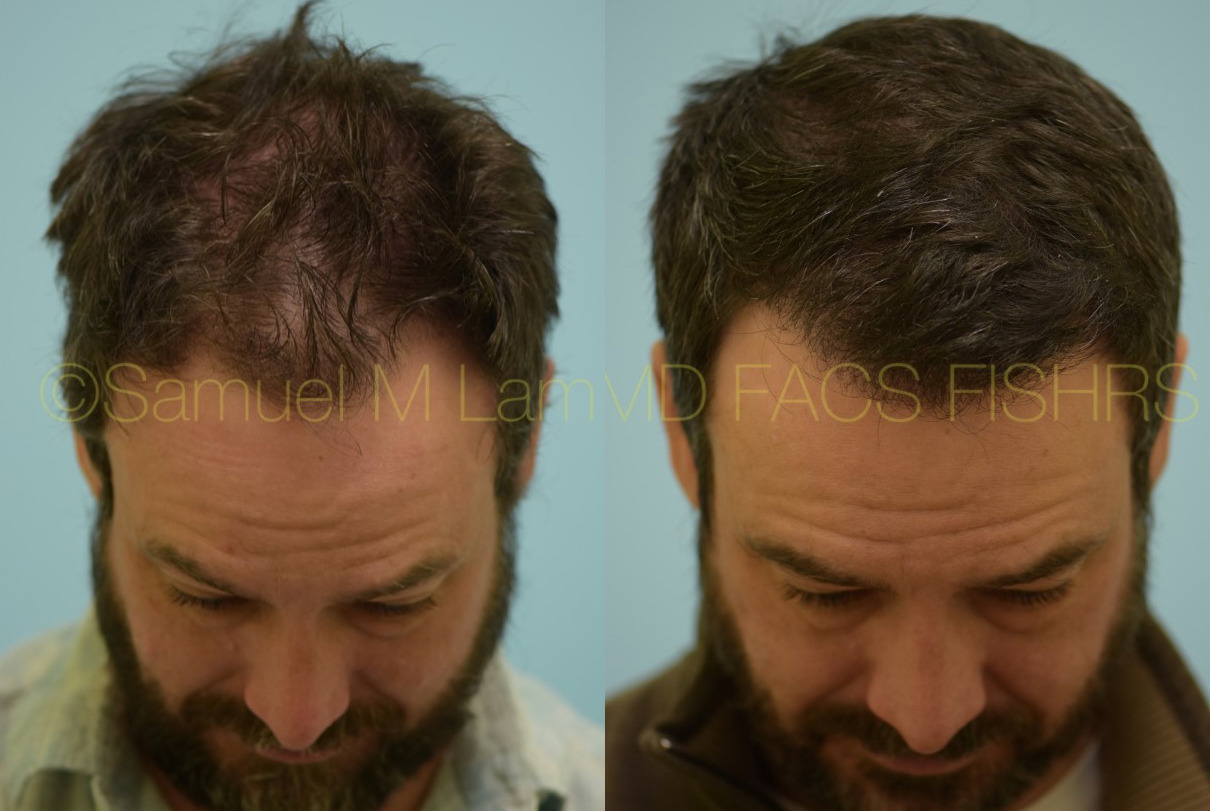Regional Hair Restoration: How to Select Hairs for Optimal Graft Placement
Many times hairs are just moved from the back of the head to the front of the head based on the number of hairs that are bundled in each follicular unit. For example, 1-hair grafts are placed into the front hairline and 2-hair grafts behind that and so on. However, little is paid to the concept of selecting the best quality hairs for the best locations since other elements define a hair graft other than the number of hairs on that graft. For instance, there can be a preponderance of gray hairs in certain areas of the scalp. Also, hairs can be curlier or thicker in certain areas of the scalp than others. It is therefore important to think of these characteristics when transplanting hairs from one part of the head to the other. Fortunately, my staff is very attuned to these regional aspects and believes that it is a very important part in how we deliver quality in our work.

Using the principle of regional hair restoration, the finest hairs were used for the hairline and the thickest hairs were used to create central hair density.
Other places simply do not focus on this element because it takes too much time and effort to pay that much attention to these kinds of (what I consider and so does my team) important details. How do I know that other teams neglect regional aspects? The reason that I know is that I have spoken with them about this matter. Further, I have hired technicians in the past who were oblivious to regional aspects of hairs to be transplanted where they previously worked. It was simply not emphasized probably because either it was not understood or more likely cared about.
How do we use regional aspects of hair for hair transplantation? We do so in many ways. First, we select the finest 1-hair grafts for the frontal hairline and even finer hairs for the temple region. Thicker 1-hair grafts we tend to combine into one graft by placing two 1-hair grafts into a single recipient site, a process known as follicular pairing. Whiter hairs are used for the temple region or are more equally distributed across the scalp so that one area does not look grayer than another. Curlier hairs are used more for the central forelock where they can create more visual density where it counts. Thicker hairs are also used for the central forelock if that is the principal area of baldness or would be allocated to fill the most important deficit of scalp baldness. Through these mechanisms, I believe we are able to achieve the twin goals of greater visual density and supreme naturalness when performing a hair transplant procedure.
Dr Samuel Lam is a certified hair transplant surgeon in Dallas, Texas. To schedule a consultation please call 972-312-8105, or visit Dr Lam’s hair transplant forum to ask him a question.




